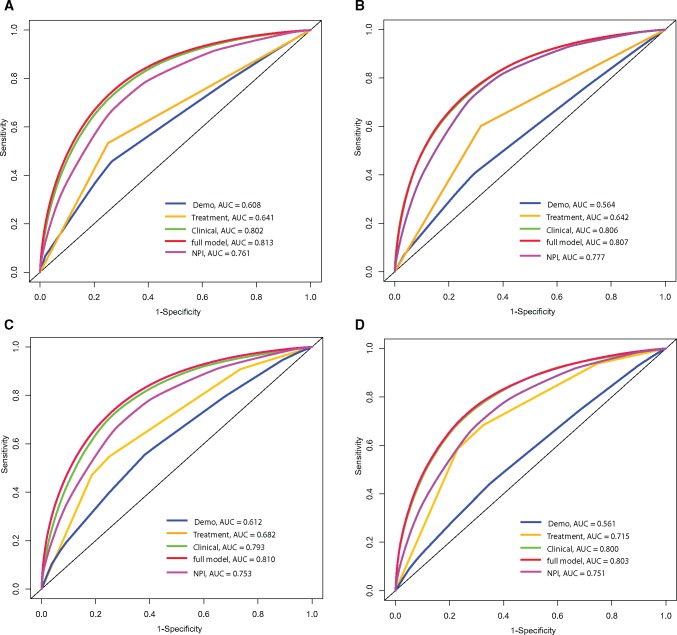Figure 2.
Discriminatory accuracy for predicting breast cancer outcomes assessed by receiver operator characteristics analysis calculating area under the curve. A) Recurrence within five years in the discovery population. B) Recurrence within five years in the validation population. C) Survival within five years in the discovery population. D) Survival within five years in the validation population. For recurrence: the demographic model included age and race; clinical model included diagnosis year; nuclear grade, tumor size, histology, number of positive nodes, cancer detection mode, breast cancer subtype, and lymphatic/vascular invasion; treatment model included adjuvant hormone therapy; full model included alcohol consumption in addition to demo, clinical, and treatment variables mentioned above. For survival: the demo model included age and race; clinical model included nuclear grade, tumor size, number of positive nodes, cancer detection mode, breast cancer subtype, and lymph or vascular invasion; treatment model included chemotherapy and adjuvant hormone therapy; full model included smoking status and physical component summary score in addition to the demo, clinical, and treatment variables mentioned above. AUC = area under the curve; NPI = Nottingham Prognostic Index.

